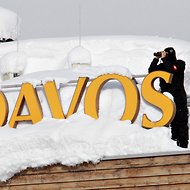The trade dispute highlights the network of interlocking interests between the countries under the North American Free Trade Agreement. Trade across the Mexican border is now worth more than $1 billion a day.
American producers of corn, soybeans, apples, pork and chicken have increased sales to Mexico greatly over the years as trade barriers have been dismantled. But at the same time, Mexico has become a fast-growing supplier of produce to American supermarkets and restaurants. Tomatoes lead the list: exports have doubled and their value has tripled since the mid-1990s, to almost $2 billion.
That has been aided by a complex arrangement dating from 1996 that established a minimum price at which Mexican tomatoes are permitted to enter the American market.
Florida farmers are leading a campaign to persuade the Commerce Department to scrap the accord. They won a victory in September when the department announced a preliminary decision to end it. Lawyers in the case say a final decision may be issued in the next few weeks.
But other United States interests are lining up in support of continuing the agreement.
For example, Richard Fimbres, a member of the Tucson City Council who is usually more concerned with improving city streets than with the minutiae of international trade law, recently sponsored a resolution asking the Commerce Department to continue the agreement.
Then he wrote to President Obama last month, declaring that “we can’t turn our back on the global economy now.”
The reason is that fresh Mexican tomatoes are big business in Arizona. Much of the $2 billion in business passes through the state, benefiting local importers and distributors.
But the benefits go beyond them. More than 370 businesses and trade groups — from small family-run importers on the Mexico border to Wal-Mart Stores — have written or signed letters to the Commerce Department in favor of continuing the deal.
Kevin Ahern, the chief executive of Ahern Agribusiness in San Diego, was among them. His company sells about $20 million a year in tomato seeds and transplants to Mexican farmers.
“Yes, Mexico produces their tomatoes on average at a lower cost than Florida; that’s what we call competitive advantage,” Mr. Ahern said in an e-mail. Without the agreement to provide “stability to a volatile market, Mexican tomato acreage destined for U.S. markets will decline,” he said, and that would damage his business.
While Florida tomato growers contend the accord is hurting their business, the broader trade dynamics are generating business for other companies in the United States.
“A lot of what is produced and harvested in Mexico is put in the ground with U.S. money and intended for U.S. markets,” said John McClung, the president and chief executive of the Texas International Produce Association. “The garden simply happens to be across the river.”
NatureSweet Ltd., which is based in San Antonio, grows cherry and grape tomatoes under 1,200 acres of greenhouses in Mexico for the American market. It employs 5,000 people, although all but about 100 of them work in Mexico.
“We couldn’t survive without Nafta,” said Bryant Ambelang, the company’s chief executive. Mr. Ambelang said that Mexican-grown tomatoes were more competitive because of lower labor costs, good weather and more than a decade of investment in greenhouse technology.
“Here we went and signed an agreement called Nafta, and now we’re going to go and wave our finger in one industry where Mexico has superiority?” he said.
Mr. McClung said that even though Texas lost much of its commercial fresh tomato industry years ago, “we can do quite nicely importing Mexican tomatoes.”
He acknowledged that growers in Florida and elsewhere were “going slowly under.” But, he added, “my job is to protect Texas importers.”
Article source: http://www.nytimes.com/2012/12/25/business/global/mexico-finds-some-us-allies-in-trade-dispute.html?partner=rss&emc=rss


